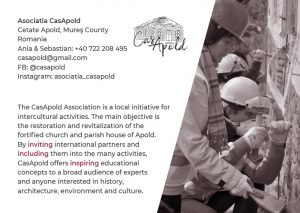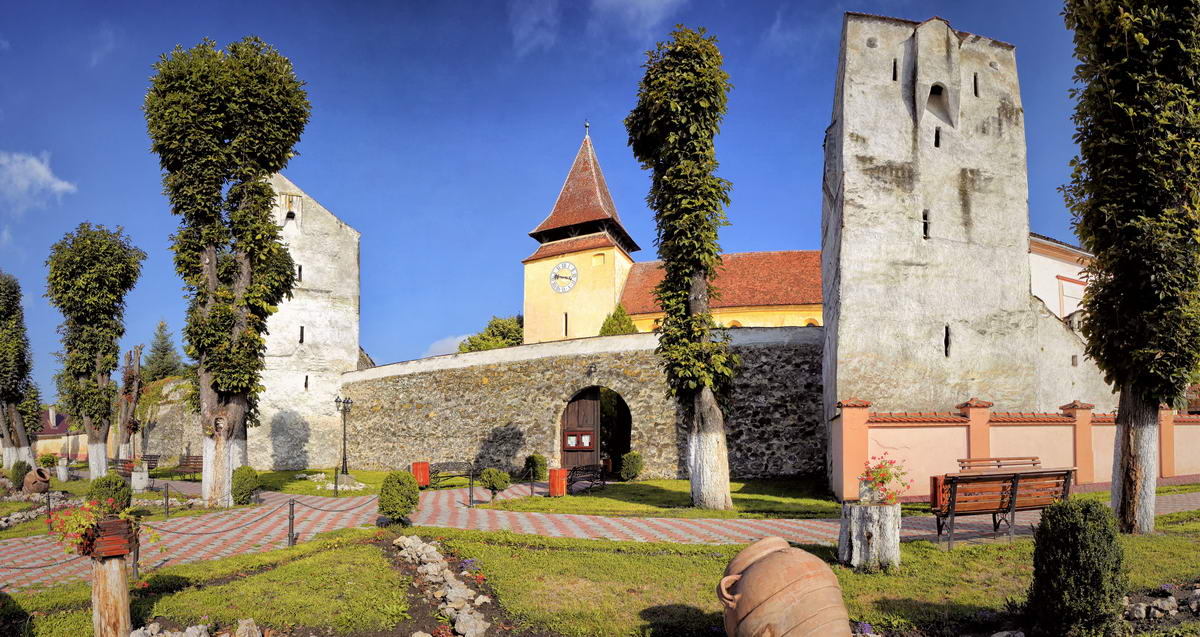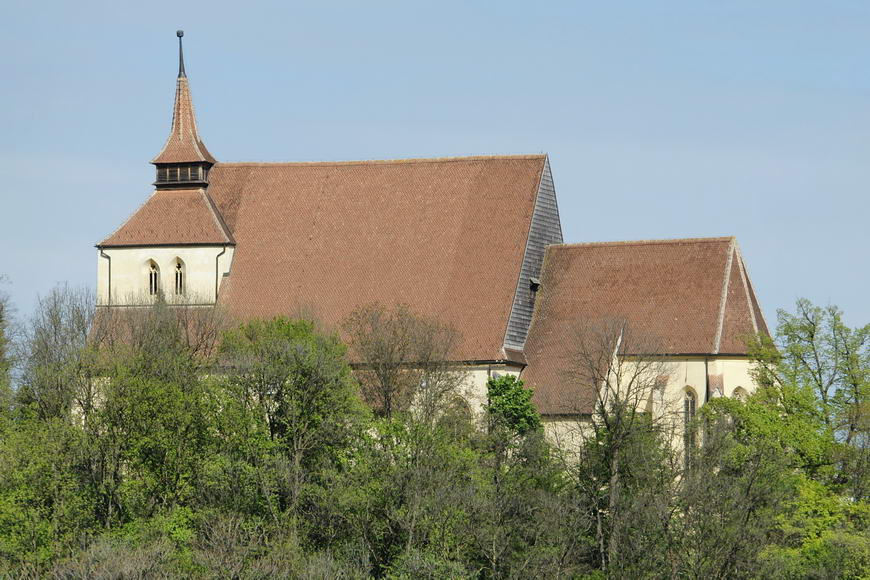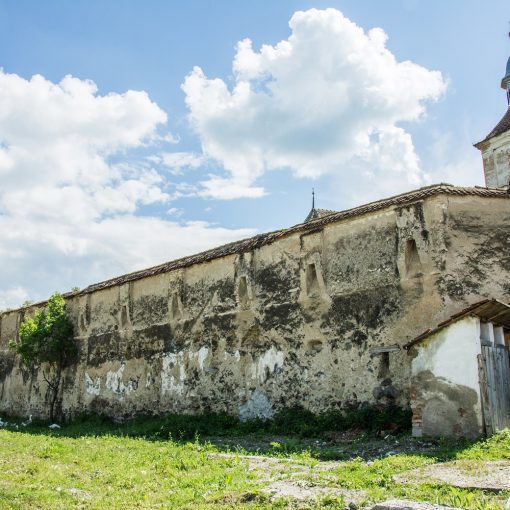
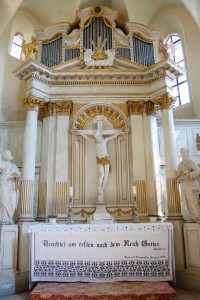 The three-aisles hall church originates from the 15th century, when the aisles of the former Romanesque basilica were heightened. The chancel and the nave were vaulted, and the walls of the side naves were replaced with octagonal pillars. A tower was built for the first time on the western side of the church and together with the nave and the chancel it was strengthened by adding defence levels between 1504 and 1507. From the fortification measures of the 15th and 16 century, the outer ring walls and three defensive towers have been preserved. The inner wall was demolished in the 19th century, but its path it is easy to track on the exposed foundations. On the north side a storage building equipped with loopholes survived the centuries. The church boasts several treasures in its interior: the neoclassical organ altar from 1821, a Gothic tabernacle, the pulpit and wooden galleries built in 1760. In the course of restoration work, a wooden baptismal font from 1686 was conserved and Gothic wall paintings were uncovered. In the Romanesque triumphal arch, one can recognize the frescoes from the 14th century: the 5 foolish and the 5 wise virgins.
The three-aisles hall church originates from the 15th century, when the aisles of the former Romanesque basilica were heightened. The chancel and the nave were vaulted, and the walls of the side naves were replaced with octagonal pillars. A tower was built for the first time on the western side of the church and together with the nave and the chancel it was strengthened by adding defence levels between 1504 and 1507. From the fortification measures of the 15th and 16 century, the outer ring walls and three defensive towers have been preserved. The inner wall was demolished in the 19th century, but its path it is easy to track on the exposed foundations. On the north side a storage building equipped with loopholes survived the centuries. The church boasts several treasures in its interior: the neoclassical organ altar from 1821, a Gothic tabernacle, the pulpit and wooden galleries built in 1760. In the course of restoration work, a wooden baptismal font from 1686 was conserved and Gothic wall paintings were uncovered. In the Romanesque triumphal arch, one can recognize the frescoes from the 14th century: the 5 foolish and the 5 wise virgins.
Place and surroundings
The 13th Century basilica erected in a strategic position on top of a hill surrounded by the river Şaeş, evolved later into the famous fortified church of Apold. The ensemble survived turbulent times and stays even today almost entirely preserved, with fortification walls, defense towers and storage rooms.
Since 2004, Sebastian Bethge and, from 2007, the CasApold association have taken care of the site. With careful and adapted conservation measures, the fortified church was repaired in small steps and with a lot of voluntary work by experts, craftsmen and volunteers. The association’s commitment led to its inclusion in an EU project that secured the fortified church complex as a whole. CasApold maintains and restores the fortified church together with the parish house. Since the beginning of 2004, seminars and workshops in building crafts and horticulture have been held annually.
On site, one can get an idea of the tasks of a castle keeper, which have adapted to the times: A few hundred years ago he had to keep an eye out for enemies and manage the grounds, later he rang the bells and heated the common room. Today, he is a kind of monument keeper and project manager who manages and maintains the castle. But he also raises funds, prepares church services, looks after tourists and organizes concerts and events.
Activities
- 2022 Workshop Hands On Conservation III
- 2022 Workshop Apold Heritage Lab
- 2010-2014 EU-funded restoration project of the fortified church
The CasApold association is committed to the preservation and revitalization of the fortified church.
Contact:
Asociatia CasApold
Tel.: +40 722 208 495
Visiting hours:
may-september: Monday-Friday, 10:00-12:00
Guided tours available in German, English, Romanian

